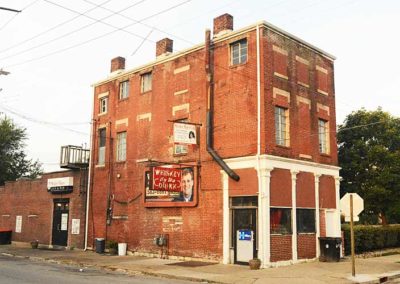Smoketown

Historically a black neighborhood since the Civil War, it is the only neighborhood in Louisville that has had such a continuous presence.
Brick production was a huge industry in the city during the 1800s that created millions of kiln-fired bricks a year that were made from clay that lies below the surface in the city’s floodplain.
A huge number of smoke-producing brick kilns existed in this neighborhood before the 1880s, before supplies of clay ran out. The abandoned water-filled clay pits may have given another nickname of ‘Frogtown’ to the area just southeast of downtown.
Residential development by whites of German ancestry had begun in the 1850s, but thousands of freed slaves from areas around rural Kentucky arrived after the Civil War. It was solidly an African-American neighborhood by 1870. The streetcar line was extended down Preston St. to Kentucky St. in 1865, spurring additional growth.
Smoketown was once densely populated, with its shotgun houses and narrow streets, it had a population of over 15,000 by 1880, but African-American property ownership was rare, with most living in properties rented from whites.
By the 1960s, the area had high crime and unemployment rates, causing massive population loss, most of the shotgun houses had been razed and housing projects had been built in their place.
One of the city’s nine Carnegie libraries is located at 600 Lampton St.
Today, the area is undergoing a major transformation with new, mixed-income housing.
